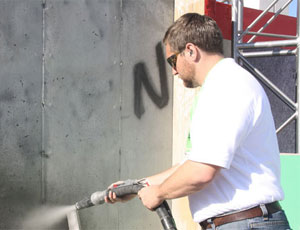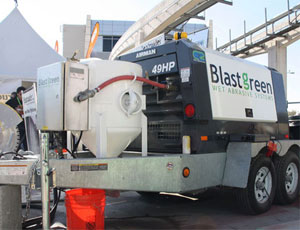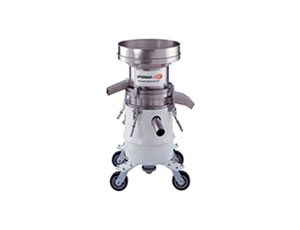As more cities and states are imposing bans on silica grit used to clean bridges, buildings and other infrastructure, suppliers offering safer alternatives are seeing tremendous growth.



“Typical sandblasting is being eliminated across the country,” says Keith Eliason, vice president of EcoQuip Inc., a Virginia Beach, Va.-based supplier and one of the newest companies on the blasting scene this year. It is the North American distributor for a U.K.-designed machine called BlastGreen, providing trailer- and skid-mounted units with working pressures of up to 125 psi.
Wet-abrasive blasters like BlastGreen—which competes with such businesses as Euless, Texas-based Keizer Technologies Americas Inc., the distributor of Torbo-brand blasters—capture the substrate with water, cutting down dust by more than 90%. BlastGreen claims to consume 50 lb to 100 lb of media per hour and about 100 gal of water per eight-hour shift.
“All the media drops right below you,” says Eliason. “There’s no runoff issues.”Dry-blasting alternatives are also available but may require a special media that costs more to buy but is easily recyclable. One such supplier—Portsmouth, N.H.-based Sponge-Jet Inc.—offers 20 different types of blasting media encased in urethane foam.
The spongy material, about the size of a match head, hits the surface and then flattens out, exposing abrasive particles to the substrate. The media then pulls away from the surface, creating suction that traps the substrate and falls to the ground.
“The demand for Sponge Media is growing over 20% a year,” says Tony Anni, marketing manager. Pound for pound, he adds, the media costs about 10 times more than traditional blasting grit but can be recycled 10 or more times, making it cost-competitive. Sponge-Jet offers dry blasters that range in price from $20,000 to $100,000, including a recycling machine.
As much as these alternatives dramatically cut the risk of silicosis, “you still get some exposure from the substrate,” notes Matt Gillen, a senior scientist with the National Institute for Occupational Safety and Health, Washington, D.C.
Silicosis risks have been known for over a century, yet the demand for dust controls is continuing to grow. Several countries, including Great Britain, Germany, Sweden, Belgium and nearly two dozen U.S. states have banned or regulated sandblasting, according to the International Safety Equipment Association, which lobbied the U.S. Occupational Safety and Health Administration last year to ban sandblasting nationwide. OSHA denied that request, noting it is in the process of updating its nearly 40-year-old silica standard. A final rule-making was set for publication in July but has now been pushed back to February.
Watch a video of the BlastGreen system at work at Construction.com/Video.


Post a comment to this article
Report Abusive Comment